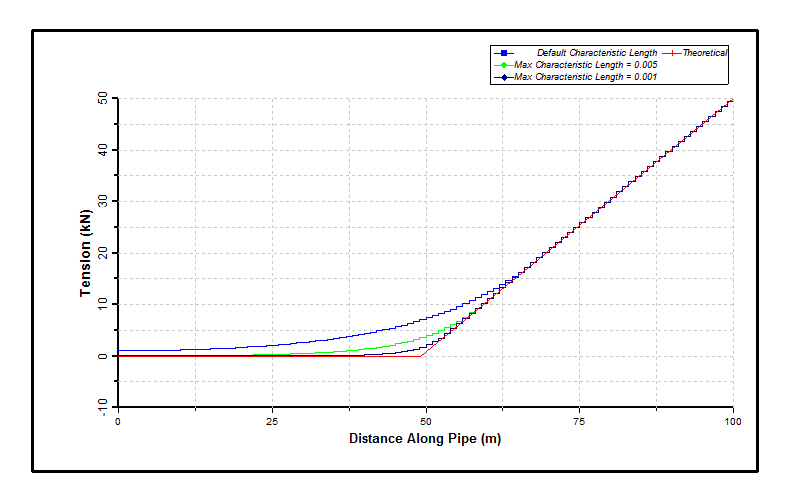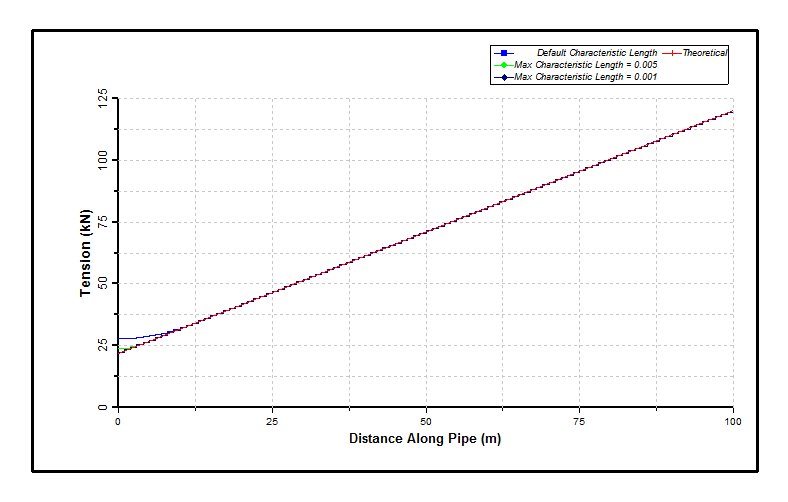To illustrate the effect of the Maximum Characteristic Length inputs on the rate of tension dissipation in a section of pipeline lying on the seabed, consider the example of a 100m long section of pipe with a wet weight W of 1962N/m, lying on a seabed with a longitudinal friction coefficient of 0.5.
Now, consider what happens if a 50kN tensile load is applied to one end of the pipe while the other remains fixed. The total tensile load that may be resisted by seabed friction is found from:
 (1)
(1)
The theoretical maximum rate of tension dissipation is simply m W = 0.981kN/m. The section of pipe is modelled in Flexcom using 100 one-metre elements. The above Equation compares results from three separate analyses of the pipe, one using the default (longitudinal) characteristic length, the second with a user-specified maximum characteristic length of 0.005m and the third with a user-specified maximum characteristic length of 0.001m. The theoretical tension distribution is also shown for comparison purposes.

Effect of Characteristic Length on Tension – 50kN Load
It can be seen that as the characteristic length is reduced, the resulting tension distribution becomes closer to the theoretical distribution, as would be expected. This is, however, at the expense of additional computational effort, as the solution is slower to converge as the characteristic length is reduced.
As the axial load is increased, and the full friction force is mobilised over a larger proportion of the pipe length, the effect on the results of varying the maximum characteristic length is reduced. The above figure shows the tension distribution in the pipe when the axial load is increased to 120kN. It is clear that in this case, each of the tension distributions corresponding to the three values for the maximum characteristic length are very close to the theoretical tension distribution.

Effect of Characteristic Length on Tension – 120kN Load
In conclusion, seabed friction is a highly non-linear and path-dependent effect that can significantly impact on structure response in certain applications. For this reason it is important that riser analysis software is capable of accurately modelling the friction loads caused by the movement of a structure on the seabed. The Flexcom seabed friction model provides a robust, accurate and fast approach to this problem, while simultaneously giving the riser analyst control over the conflicting requirements of accuracy and solution speed.